Speakers
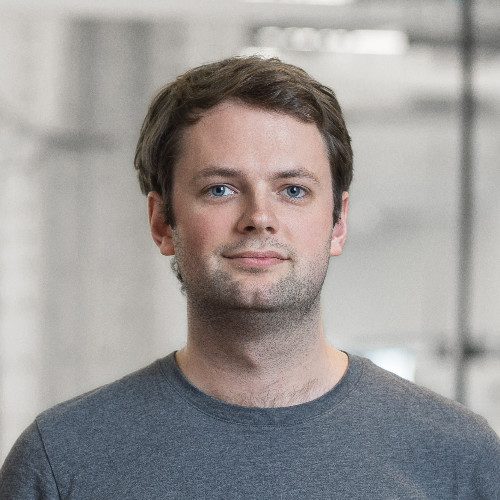

Unsupervised representation learning with deep neural networks
by Piotr Bojanowski | Research Scientist | Facebook AI Research
Show infoBiography:
Piotr Bojanowski is Research Scientist at Facebook AI Research (FAIR). He is interested in applications of machine learning to Computer Vision and Natural Language Processing. His main research interests are focused on large-scale unsupervised learning. Co-creator of the fastText library designed to help build scalable text representation and classification solutions. Before joining Facebook, in 2016, he received his Ph.D. in Computer Science while working in the Willow team where he was involved in Human Action Detection in Videos with Aligned Text. A graduate of École Polytechnique, where he got a Masters Degree in Mathematics, Machine Learning and Computer Vision (MVA)
Abstract:
Deep-learning systems trained on huge collections of annotated data have proven extremely useful in solving complex tasks and helping build great applications. However, good performance is conditioned on the obtention of high-quality manual labels for the task at hand. A typical success story was the use of CNNs for computer vision tasks, which was fueled by the construction of ImageNet. Recent work has shown that for many problems, so-called self-supervised learning allows obtaining great features while only using the raw data, alleviating the need for costly labeling.
In this talk, I will present some of the work we did in that direction at FAIR. This includes unsupervised word representation learning as implemented in FastText, unsupervised feature learning for images using clustering losses, and initial experiments on control tasks such as navigation in visually challenging environments.


Brain-inspired computing
by Stanisław Woźniak | Postdoctoral Researcher | IBM Research - Zurich
Show infoBiography:
Stanisław Woźniak pursues his research in the field of neuromorphic computing, taking inspiration from the neural networks in the brain to develop novel computing architectures. He received his Ph.D. in 2017 from École Polytechnique Fédérale de Lausanne. In 2018, he received the Fritz Kutter Award of ETH Zurich and IBM Research Division Award for contributions in neuromorphic computing using phase-change memory devices. Since 2018, he is a Post-doctoral Researcher at IBM Research – Zurich. His current focus is on closing the gap between the theoretically appealing properties of Spiking Neural Networks and their applications.
Abstract:
Understanding the inner workings of the brain unveils a tremendous potential to advance AI. The research in neuromorphic computing takes inspiration from the brain to develop novel computing paradigms. In particular, we will focus on three key brain-inspired aspects of neuromorphic computing. Firstly, the physical structure of the nervous tissue that leads to the concept of mixed digital-analog in-memory AI accelerators and offers speed and efficiency advantages over GPUs. Secondly, the temporal dynamics of the biological Spiking Neural Networks (SNNs), which we incorporate into deep learning through the so-called Spiking Neural Unit (SNU). SNU achieves accuracy comparable to LSTMs and GRUs, but it is simpler, more biologically-realistic and amenable to efficient hardware acceleration. Lastly, the processes involved in neuroplasticity, based on which we propose the Online Spatio-Temporal Learning (OSTL) algorithm. OSTL is gradient equivalent to the backpropagation-through-time (BPTT) algorithm, yet it operates online, avoiding the need to store the past activations and to unroll the network through time. These advances in neuromorphic computing provide new promising directions for deep learning and AI.

Biography:
Adam R. Kosiorek is a Research Scientist at Google DeepMind in London. His research interests include unsupervised representation learning, particularly learning object-centric representations from images and videos without supervision, and generative modelling. He is also interested in inference methods for probabilistic generative models. Previously, Adam interned at Google Brain in Toronto with Geoff Hinton, where he developed Stacked Capsule Autoencoders. He received his Ph.D. from the University of Oxford, MSc from the Technical University of Munich and BSc from the Warsaw University of Technology. In his free time, Adam likes reading books and training calisthenics.
Abstract:
Deep learning is traditionally concerned with ordered data such as images (ordered pixels) or natural language sequences (ordered tokens). In many cases, like multiple-object tracking or epidemiological modelling, there is no such order, and data are best treated as sets. In this talk, we will consider sets and how their lack of structure influences deep learning model design. To this end, we will divide set learning into three problems: set to vector, vector to set, and set to set. We will explore the constraints posed by these problems and delve into existing models that solve them. Finally, we will touch upon point processes theory, which tells us how to define a likelihood function over sets. We will also talk about open problems in set learning.

Biography:
Karol Kurach is a Chief Technology Officer at Cosmose, trying to understand and predict how 1 billion people shop offline. Before Cosmose, he was a Research Lead at Google Brain, focusing on projects related to Reinforcement Learning, GANs and sequential models. He is also a co-author of intelligence systems inside Gmail, such as Smart Reply and Categories (a.k.a. Tabs). During his PhD at the University of Warsaw, he worked on deep neural architectures with external memory, in collaboration with researchers from Brain and OpenAI. Winner of many programming competitions, including 24h coding marathons. He represented Poland and was an European Champion & ACM ICPC World Finals silver medalist.
Abstract:
Machine Learning is an extremely powerful toolkit for quickly building complex systems that can learn from data. However, there’s no free lunch - with the great power of those methods comes great complexity, in terms of development, deployment and maintenance.
In this talk I’m going to discuss 7 habits that can vastly improve the odds of success of the ML system, based on my personal experience from places like Gmail Intelligence and Google Brain.
We will start by explaining how to approach the problem and what are the best practices of iterating on the solution. Later, we’ll discuss how to approach the research papers from a practitioner's perspective, and what are the key aspects to look for. Finally, we will cover the tradeoffs between ML-based and non-ML-based systems, and the associated cost.
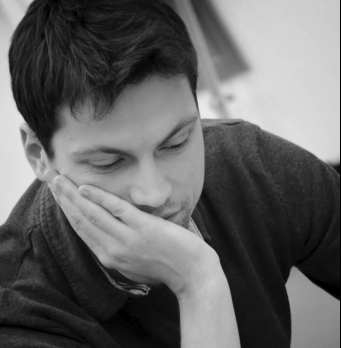

Delivering FastPitch: A Major League, Parallel Text-to-speech Model
by Adrian Łańcucki | Senior Deep Learning Engineer | NVIDIA
Show infoBiography:
Adrian Łańcucki is a Senior Deep Learning Engineer at NVIDIA Poland. He received his PhD in Machine Learning in 2019 from University of Wrocław. His research interests include NLP, most recently text-to-speech, speech recognition, and representation learning. In 2017 his team ranked 1st ex aequo at the NIPS 2017 Conversational Intelligence Challenge. Briefly visited at NYU, did a research internship at Microsoft, participated in the JSALT summer workshop.
Abstract:
FastPitch is a recently-developed TTS model based on FastSpeech. It seems to be a home run: with mel-spectrogram synthesis up to 1000x real time, favorable MOS scores, a high degree of control by conditioning on pitch contours or speaker identity, trainable on commodity hardware.
Right off the bat we will focus on the development process, rather than the model. We will look for clues in the original FastSpeech paper and try our luck re-implementing. Then, we will discuss a practical strategy for adjusting hyperparameters of a generative model. The idea is to tackle a couple of real issues that would be otherwise swept under the rug. It's not the destination, it's the journey.


Explainable deep neural networks for medical image analysis
by Krzysztof Geras | Assistant Professor | New York University
Show infoBiography:
Krzysztof is an assistant professor at NYU School of Medicine and an affiliated faculty at NYU Center for Data Science. His main interests are in unsupervised learning with neural networks, model compression, transfer learning, evaluation of machine learning models and applications of these techniques to medical imaging. He previously did a postdoc at NYU with Kyunghyun Cho, a PhD at the University of Edinburgh with Charles Sutton and an MSc as a visiting student at the University of Edinburgh with Amos Storkey. His BSc is from the University of Warsaw. He also did industrial internships in Microsoft Research (Redmond, working with Rich Caruana and Abdel-rahman Mohamed), Amazon (Berlin, Ralf Herbrich's group), Microsoft (Bellevue) and J.P. Morgan (London).
Abstract:
Although deep neural networks have already achieved a good performance in many medical image analysis tasks, their clinical implementation is slower than many anticipated a few years ago. One of the critical issues that remains outstanding is the lack of explainability of the commonly used network architectures imported from computer vision. In my talk, I will explain how we created a new deep neural network architecture, tailored to medical image analysis, in which making a prediction is inseparable from explaining it. I will demonstrate how we used this architecture to build strong networks for breast cancer screening exam interpretation and COVID-19 prognosis.
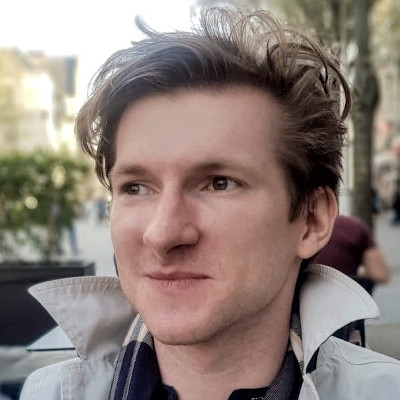

Recent advancements in adversarial speech synthesis
by Mikołaj Bińkowski | Research Scientist | Google DeepMind
Show infoBiography:
Mikołaj Bińkowski is a Research Scientist at DeepMind and a PhD student at Imperial College London. His research has focused mostly on various aspects of Generative Adversarial Networks, including training objectives, evaluation and their application to new domains such as speech synthesis. Previously, he interned at Google Brain Amsterdam and at Montreal Institute for Learning Algorithms, where he worked with Aaron Courville on image-to-image transfer. He holds an MSc in Financial Mathematics from the University of Warsaw, and a BSc in Mathematics from the Jagiellonian University.
Abstract:
Generative Adversarial Networks have seen rapid development in recent years, leading to major improvements in image and video generation. On the other hand, for a long time successful application of GANs to other domains, in particular audio and speech synthesis, remained a major challenge. During last year, however, several promising approaches appeared, proving that high fidelity speech synthesis is feasible with adversarial nets, and leading to new kinds of efficient, feed-forward generators of raw speech. A common theme in these works is a concept of random local discriminators, operating on subsampled audio at various frequencies. Like most speech synthesis models, GANs for text-to-speech rely on strong conditioning, either by linguistic features, or mel-spectrograms. In this talk, I will discuss these recent advancements in detail, and show how combining them with mel-spectrogram reconstruction loss and new alignment architecture allow us to abandon the usual conditioning systems and obtain end-to-end, fully differentiable text-to-speech models.
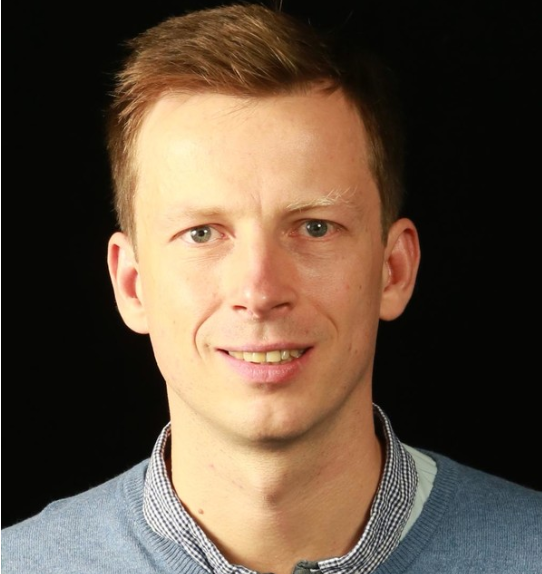

How to Invent: From Probability Theory to Expressive Text-To-Speech.
by Daniel Korzekwa | Applied Science Manager | Amazon TTS-Research
Show infoBiography:
Daniel Korzekwa has two decades of professional experience in machine learning science and engineering, full of passion and joy. He started in engineering, building large-scale distributed Java/Oracle-based systems for data collection and monitoring of heterogeneous networks in Telco, Gas and Health industries. Gradually, he moved to machine learning science, solving problems in the betting industry. For last couple of years, he has been working as Applied Science Manager at Amazon TTS-Research, solving problems related to speech synthesis and AI-driven speech therapy. To make our lives better. He has a lovely wife, three sons, a dog, a guinea pig, and a rabbit. Currently, living in Gdansk, but previously lived for years in both Poznan and Gliwice.
Abstract:
Applied Science is a trendy thing. With plenty of frameworks for Deep Learning and tutorials to solve almost every possible problem it sounds super exciting to become an Applied Scientist. You can think, yea!, I trained a few complex Deep Learning Models and it worked. I could be a scientist! - it is easy and fun:). With all this excitement, you might get trapped and forget that it is instrumental to learn and understand all the fundamentals behind Applied Science: Mathematics, Probability Theory, Statistics and only then learn Deep Learning. In this talk, I will present a beautiful connection between complex Deep Learning Models for Expressive Text-To-Speech and underlying concepts of Probability Theory. Understanding this connection can make a difference for you between being able 'to build' and 'to invent' Deep Learning Models for your applications.
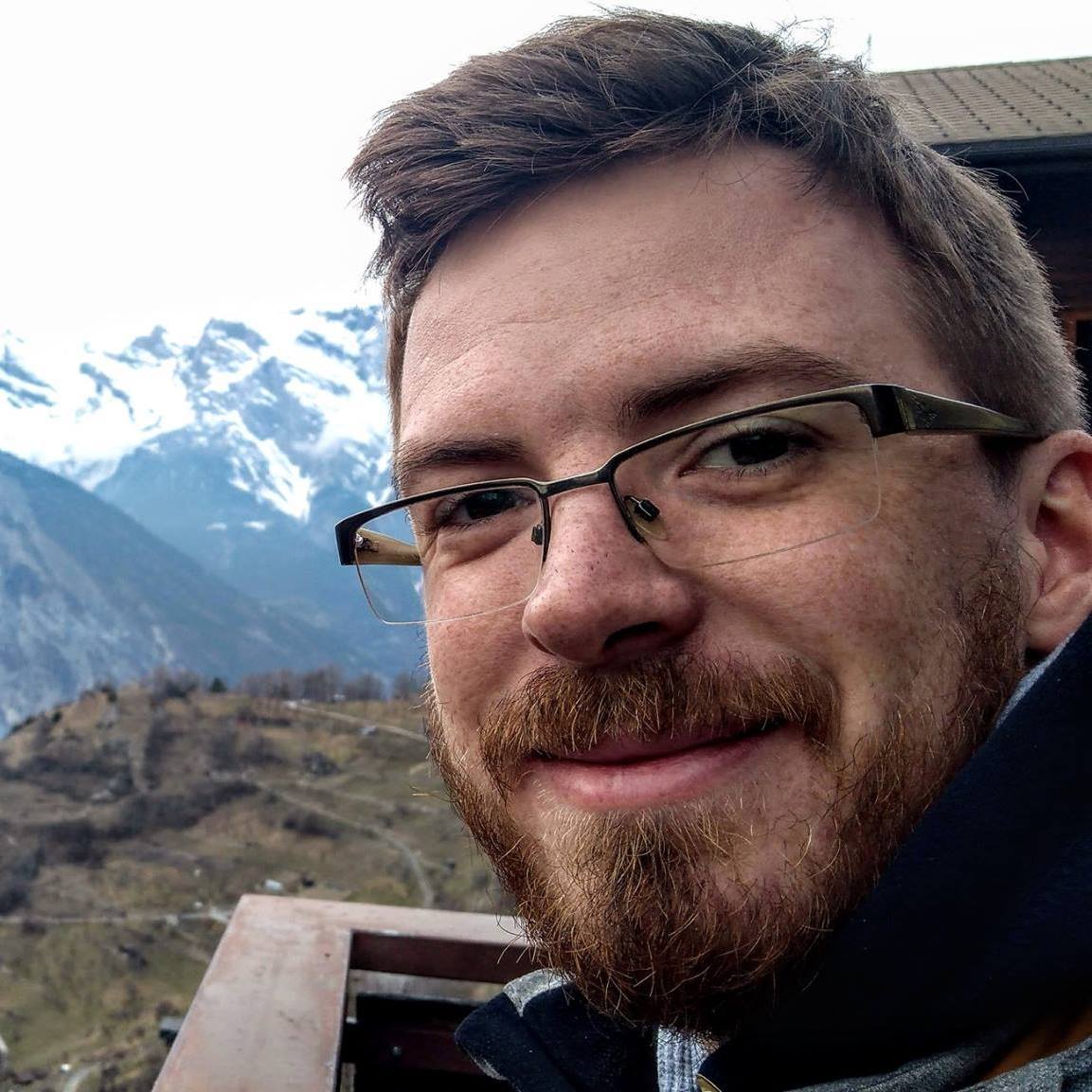

What does the user ask for? - Discovering new intents in conversational data
by Piotr Rybak | Senior Research Engineer | Allegro
Show infoBiography:
Piotr Rybak pracuje w Allegro w zespole Machine Learning Research, gdzie zajmuje się przetwarzaniem języka naturalnego. Absolwent matematyki, pasjonat uczenia maszynowego, miłośnik gier planszowych i wspinaczki.
Abstract:
Wiele współczesnych chatbotów działa w oparciu o wykrywanie jednej ze zdefiniowanych wcześniej intencji. Dzięki temu chatbot może wysłać użytkownikowi odpowiedź lub wykonać jakąś akcję. Problem w tym, że trzeba te intencje najpierw zdefiniować. Ręczne przejrzenie historycznych konwersacji jest czasochłonne, a sam proces trzeba regularnie powtarzać, żeby wykrywać nowe pytania. W tej prezentacji opowiem o najnowszych modelach służących do częściowo nadzorowanego klasteringu, który ułatwia wykrywanie nowych intencji.
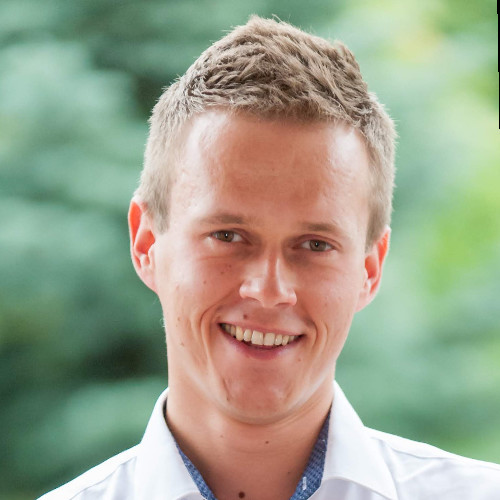

SmogSpots. How machine learning may help us to solve smog issue?
by Kacper Łukawski | Founder | AI Embassy
Show infoBiography:
Kacper Łukawski is the founder of AI Embassy. His broad experience is mostly related to data engineering, machine learning, and software design. He has been actively contributing to the discussion on Artificial Intelligence by conducting lectures and workshops locally and internationally. Currently, He's running an NGO, focused mostly on education in AI and solving social issues by applying Machine Learning methods.
Abstract:
Many European countries suffer from smog. There are various pollution sources and legislation could not solve the issue so far. In Eastern Europe, the main pollutants are the individual households which use fuels of low quality for heating. So-called low emission is hard to be eliminated, even though local governments support the replacement of old-styled furnaces. SmogSpots is a winning project of Smogathon 2019, created by "AI Embassy" - a new NGO which aims to educate in AI and solve social issues by applying such techniques. We aim to detect the households which pollute the air and support the authorities to help the owners of these properties to solve their issues.
During the presentation, we are going to present an approach to use explainable AI techniques for determining the pollution sources and how the satellite images may help to detect the individuals who produce smog.

Biography:
Zbigniew Michalewicz is currently Emeritus Professor of Computer Science at the University of Adelaide, Australia, and a Professor with the Institute of Computer Science, Polish Academy of Sciences and the Polish-Japanese Institute of Information Technology, Warsaw. He is also the Chief Scientific Officer at Complexica, a leading provider of software applications that harness the power of Artificial Intelligence and big data to optimise sales, marketing, & supply chain decisions. For many years his research interests were in the field of evolutionary computation. He published several books and 300 widely cited technical papers in journals and conference proceedings (over 50,000 citations). Zbigniew has secured numerous multi-million dollar industry contracts from companies such as General Motors, Ford Motor Company, Bank of America, U.S. Department of Defense, PKN Orlen, BB&T, and Dentsu, and his achievements have been recognized by many invited talks publications, including TIME Magazine, Newsweek, New York Times, Forbes, Business Journal, and the Associated Press among others.
Abstract:
The talk would cover a few AI-based business applications for transforming data into decisions, based on work done for three companies (NuTech Solutions, SolveIT Software, and Complexica) over the last 20 years. A few general concepts (Adaptive Business Intelligence, Travelling Thief Problem, Larry – the Digital Analyst) would be discussed and illustrated by a few examples. The final part of the talk would present Complexica’s approach for increasing revenue, margin, and customer engagement through automated analysis.
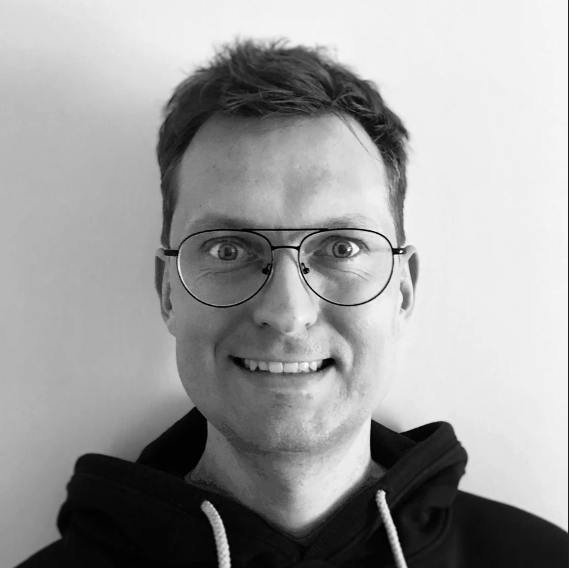

Where do the adversarial examples come from?
by Marcin Mosiolek | AI Tech Lead | EY GDS Poland
Show infoBiography:
Marcin Mosiolek is an AI Technical Leader in EY GDS running ML projects related to the company's principal activities using state of the art NLP techniques. The solutions he works on must offer high prediction accuracy and guarantee that potential attackers can't easily fool them. In the previous year, Marcin has been leading AI teams of different scales and collected rich experience in a wide range of computer vision, machine learning, and software engineering ventures. Marcin is a graduate from the Wroclaw University of Technology.
Abstract:
Potential adversaries can compromise Machine Learning models' results in any desired way, using so-called "adversarial examples." As more and more artificial intelligence algorithms are becoming part of ordinary devices, there is an increasing demand for preventing potential attacks. Thankfully the security challenges do not remain unnoticed, and there is a significant effort of the machine learning community to explain and address the vulnerabilities. The problem also takes much attention in EY, where our team tries to build high quality and secure models. The rapidly growing domain named Adversarial Machine Learning focuses entirely on model security and brings more and more publications each year. In this talk, the speaker will present several different hypotheses presented over recent years and explaining the phenomenon of "adversarial examples." Moreover, he will try to answer why they exist.


Natural Language Processing with Deep Learning and TensorFlow
by Barbara Fusińska | AI Services Lead in EMEA | Google
Show infoBiography:
Barbara Fusińska, AI Services Lead in EMEA ( Machine Learning Strategic Cloud Engineering ) at Google, is a Data Scientist with strong software development background. She graduated from AGH University of Technology and Science with a Computer Science degree. She gained experience building diverse software systems while working with a variety of technology companies including Microsoft and Katacoda. These experiences have brought her focus to the Data Science and Big Data field. She believes in the importance of the data and metrics when growing a successful business.
Abstract:
Natural Language Processing offers techniques to get insight from and generate text data. In this session, Barbara will make the introduction to NLP concepts and deep learning architectures using document context. The audience will be led through the series of tasks with TensorFlow, starting from Creating simple embeddings representation, applying them to the classification task and text generation.


How to build a deep learning-based system for precise pose estimation in sports in 3 months?
by Wojciech Rosinski | CTO | ReSpo.Vision
Show infoBiography:
"Wojciech Rosinski is CTO in ReSpo.Vision, a SportTech startup aiming to revolutionize football analytics by leveraging the latest, cutting-edge AI research to watch & analyze football games providing players, scouts, managers, clubs and federations with unmatched depth of knowledge. He has extensive experience in both R&D and industry projects, where he was working on diverse projects spanning computer vision, natural language processing and tabular data. He is a Kaggle Master with 2 gold medals and multiple high finishes."
Abstract:
In sports, the key source of information is player body movement. With deep learning surpassing human performance in many vision tasks, it is now possible to build a robust automated system extracting this data based on just the TV broadcasting feed. But to achieve high quality predictions, it is not enough to just apply an out-of-the-box solution using state of the art models.
I will present the approach we have taken to build our solution, talk about some of the critical aspects for optimizing model accuracy and how to build a pipeline leveraging cutting edge models with data processing. I will also discuss ways to facilitate model debugging, speed up experimentation and enable faster delivery of results.
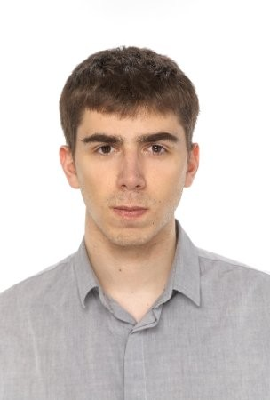

Multi-object tracking of people in surveillance videos
by Artur Zygadło | Data Scientist | deepsense.ai
Show infoBiography:
Currently a Data Scientist at deepsense.ai, working on various problems in the fields of Computer Vision (instance segmentation, multi-object tracking) and Natural Language Processing (document similarity). Having graduated from Warsaw University of Technology, he holds a Bachelor’s degree in Robotics and a Master’s degree in Computer Science. His academic background is in automatic speech recognition for Polish (co-authored two papers) and chatbots (started PhD studies in this area in 2019). His past professional experience includes relational databases (internship at CERN) and data engineering for Samsung’s voice assistant.
Abstract:
The goal of multi-object tracking is to determine the position of specific objects present in the sequence of video frames. It can be seen as a combination of object detection and re-identification, which can be applied in two separate steps or a single one. For each frame, the visible objects are detected, and then a matching step is performed in order to assign the detections to the already existing tracks or to initiate new ones.
This presentation will be the description of deepsense.ai’s ongoing research in the field of multi-object multi-camera tracking of people in surveillance videos in shopping environments. During the talk, our custom tracking pipeline we developed as an extension of state-of-the-art frameworks will be presented, together with the business requirements it needs to follow. The summary of our experiments will be provided. The issues we encountered and our solutions to them will be highlighted, followed by our ideas for further model improvements.


Let the Product Lead: R&D Paradigms for Recognition Models of Handwritten Math Expressions
by Quinn Lathrop | Manager, Data Science | Pearson
Show infoBiography:
Quinn Lathrop leads a data science team within AI Products and Solutions at Pearson. His team has designed, developed, and deployed a broad set of product features including the handwriting recognition capabilities, reinforcement learning recommenders, and adaptive personalized tutoring systems of the Aida Calculus app. Quinn holds a PhD in Quantitative Psychology from the University of Notre Dame and currently lives in Denver, Colorado.
Abstract:
Typical approaches to handwritten recognition tasks involve collecting and tagging large amounts of data on which many iterations of models are trained. The “one dataset, many models” paradigm has specific drawbacks within the context of agile product development. As product requirements evolve naturally, such as the addition of a new characters into the prediction space, a new data collection and tagging effort must be undertaken.
In this talk, I’ll describe a different approach where we iteratively build a complex, synthetically generated dataset towards specific requirements. The generation process delivers exact control over the distribution of math expressions, characters, location of characters, specific visual qualities of the math, image noise, and image augmentations to the developer. Thus, we can arrive at a “many datasets, one model” paradigm where the capability (driven by iterative changes in the data) can quickly iterate and adapt on agile cycles.
In addition to affording alignment with the product development process, synthetic data allows for 100% correct pixel by pixel tagging that opens the door for new modeling possibilities at scale.
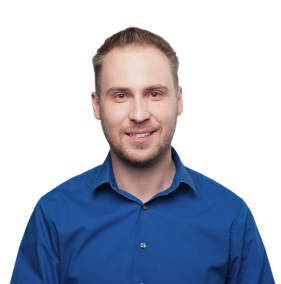

Enhancing machine learning algorithms with a human-in-the-loop approach
by Adam Gonczarek | CTO & Co-Founder | Alphamoon
Show infoBiography:
Adam Gonczarek, PhD is a Chief Technology Officer and Co-Founder at Alphamoon. His scientific life has been devoted to Wrocław University of Science and Technology - Adam received there Master's degree in both Mathematics and Computer Science and pursued a doctorate in the field of Machine Learning. Since 2013 Adam has been working as an Assistant Professor at Wrocław University of Technology. In 2017 he co-founded Alphamoon - a company providing state-of-the-art AI solutions. Adam is also an enthusiast of deep learning in its applications and a passionate traveler.
Abstract:
In recent years machine learning algorithms have successfully achieved or even surpassed human-level performance in various tasks from different domains, including computer vision, medical applications, board and computer games. This is mostly due to the advances in deep learning which usually come along with massive training datasets with hundreds of thousands of examples and huge computational power of many GPU/TPUs. This makes creating autonomous ML systems with human-level performance very expensive and limited. During the talk I will cover different approaches on how we can involve humans in both the training and prediction phases to instantly gain from automation, continually improving the accuracy whilst keeping human-level performance at the same time.
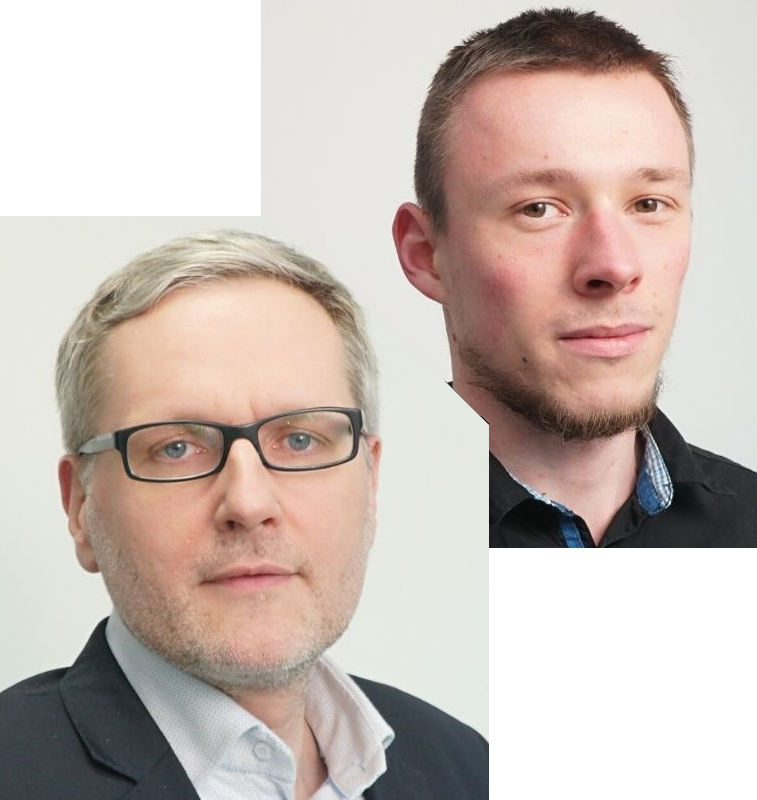

Application of Generative Query Networks for industrial time series
by Grzegorz Miebs & Rafał A. Bachorz | Data Scientists | PSI Polska
Show infoBiography:
Grzegorz Miebs - Data Scientist at PSI Polska and PhD student at PUT Rafał Bachorz - Line Manager at PSI Polska
Abstract:
When monitoring a pipeline used to transport different liquids or gases, it is impossible to monitor pressure and other metrics in every point since only a limited number of sensors can be installed. Moreover, some of the installed measurement points can be down due to breakdown or maintenance.
The Generative Query Networks can be used for predicting the measurement in the places where they are not available.
Our main aim is to incorporate the industrial reality into the generative model. The model learns different hydraulic states of the pipeline based on pressure time series reflecting common hydraulic event or given state
During the prediction phase, the model can be requested to generate a state for given presumptions (e.g. time, position, and implicitly the time series from neighboring measurements).
This approach can be used not only for pressure time series but for any other use-case with the time dimension.


Advances in neural network information retrieval
by Czeslaw Jedrzejek | Professor | Poznan University of Technology
Show infoBiography:
Czesław Jędrzejek is currently a Professor at Faculty of Computing, Poznan University of Technology. Between 2008-2016 was a head of Division of Information Systems and Technologies. His previous positions were at Jagiellonian University, Cracow, four American universities (among others University of Chicago, and Texas A&M University during 10 years). He has over 200 scientific publications to his credit in the areas of physics, telecommunications, information engineering and economy. He has been a (co)principal investigator in 4 American, 6 European Union, and 5 Polish research grants. He was a supervisor of 5 Ph.Ds. His main area of scientific interest are: 1. Information retrieval (IR) for biomedical systems: TREC PM, bioCADDIE (currently the best result), evaluation of incomplete evaluation measures 2. The use of advanced neural networks for language tasks (mainly for query expansion in IR; Jakub Dutkiewicz, the coauthor of the talk prepares a doctoral thesis 3. Malware classification - the best result for Kaggle Microsoft Malware Classification.
Abstract:
We present insight on the use of machine learning within natural language processing, specifically in the information retrieval field. Contrary to most natural language processing tasks sequence neural networks do not perform so well for information retrieval. There are several reasons for this. First, search keywords are not easily transferable to question sentences. Second, for some areas such as medical search, a number of annotated questions does not exceed 50 which makes machine learning ineffective. In this talk we discuss our progress at TREC Covid initiative. The goal of the competition is to create a set of tools capable of answering the most common COVID-19 related questions with use of the scientific literature. We use a canonical baseline, here the DFR BM25 method to create initial ranking. We train a neural network, which learns how to rerank the initial ranking. In our architecture the attention layer appears at the bottom of the layers stack. We also use a classical word2vec autoencoder in order to create word embeddings. The small number of questions (topics) limitation is overcome by external passages taken from expert pages. We discuss our hardware nVIDIA farm setup, the vast pre-processing, characteristics of input data, network architectures.
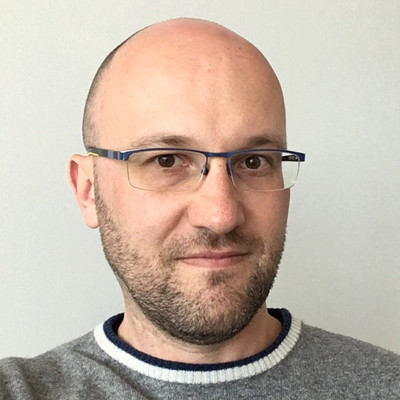

Challenges of commercializing language models on mobile devices
by Szymon Łęski | Senior Research Engineer | Allegro
Show infoBiography:
Szymon has over 4 years of experience in the industry of Machine Learning and over 13 years of experience as a scientific researcher. He holds PhD in physics and habilitation (DSc) in computational biology. In 2016 he joined Samsung Electronics as Technical Leader for NLP projects and after 2 years was promoted to the role of Group Leader in the field of Natural Language Processing. He supervised teams focused on NLP and data acquisition. After 4 years of working for Samsung, he joined Allegro as Senior Research Engineer. In his free time he plays Hearthstone.
Abstract:
Language models have been a hot topic in Natural Language Processing for the past few years. Models such as BERT or GPT learn the statistical structure of the language, allowing for unsupervised pre-training for various downstream NLP tasks. But language models are used not only in cutting-edge research. They are also embedded in applications we use every day, such as predictive keyboards on mobile devices. We will learn about language modeling for mobile keyboards, from statistical n-gram models to models based on neural networks. We will also look at the many challenges one faces when trying to prepare commercial-quality models: collecting high-quality corpora, compressing the models and making them fast, measuring their quality - and making sure the whole process is efficient enough to be repeated for all the languages we want to support.
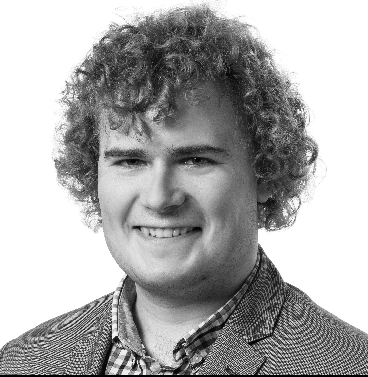

The 21st century approach to ML
by Grzegorz Mrukwa | Senior ML Engineer & Team Leader | Netguru
Show infoBiography:
Grzegorz Mrukwa is Senior Machine Learning Engineer in Netguru. Microsoft Imagine Cup Poland finalist. In his PhD research at Silesian University of Technology focuses on clustering heavily multidimensional biological data, releasing the algorithms through open-source library divik. Grzegorz gained experience building ML systems for healthcare in Future Processing and his own startup - Spectre. In Netguru Grzegorz built not only code & models, but also ML need discovery, ML project specification, and ML-Ops. Believes that numerous issues with ML projects (low profitability, bias, uncertainty, etc.) could be resolved with proper ML system design and change management.
Abstract:
ML code and algorithms are necessary, but not sufficient pieces of a full ML solution. In this talk we will focus on the model training and debug processes. Everyone uses git for code tracking, but it’s definitely not enough for ML. Remember the feeling when you trained that top-performing segmentation network, but then someone in your team changed folds and everything just blew up? Data, experiments, artifacts, logs, ... - all these are important and the tools are already there! You will see how we approached things initially in a small scale and the challenges we faced. Then we will discuss one of the recent setups as an example on how to ensure reproducibility, scalability and convenience using modern ops tools. Finally, you will learn how to construct a similar environment for your own experiments - either it’s a single node or an auto-scaling cloud cluster. My deployment experience includes various scenarios (e.g. a large insurance provider in Germany, or GeCONiI - the computational center at Silesian University of Technology), so during Q&A we can think how to adapt the setup for your needs.
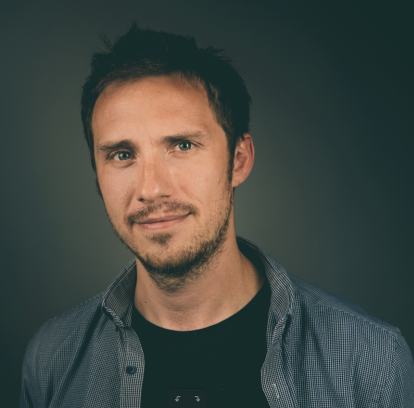

The future of machine learning in autonomous cars
by Maciej Dziubinski | Machine Learning Engineer | Equinix
Show infoBiography:
Maciej Dziubinski is a Machine Learning Engineer at Equinix working on data center cooling optimization, a member of the OPIUM foundation (opium.sh), and a blogger (medium.com/@ponadto). In his spare time, Maciej pursues his interests in autonomous vehicles and in particular: on applying machine learning techniques for perception and control. As a member of a 3-person team, he won two F1/10th competitions (f1tenth.org) in Turin and New York. More recently, he is a member of the EuroRacing Team that takes part in the Indy Autonomous Challenge (indyautonomouschallenge.com), a $1.5M competition in which autonomous cars compete in a head-to-head race at 200kph on the Indianapolis Speedway. The team comprises almost 40 scientists and enthusiasts across three countries and four universities.
Abstract:
Many tasks and subtasks in perception, planning, and control benefit from machine learning, and especially deep learning, components. However, as the landscape of available technologies changes (in particular: new types and/or cheaper sensors and ever better simulation environments) what new directions will become available for machine learning? This presentation will focus on one application, the bird's eye view reconstruction, and will give an overview of new and exciting frontiers of: sensor technology, simulations, and machine learning techniques, and will discuss their possible impact on autonomy and our daily lives in the (hopefully near) future.
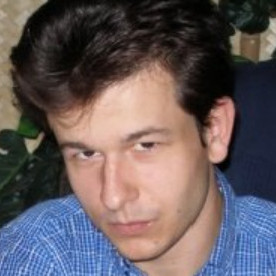

Document Intelligence - Natural Language Processes Challenges and Solutions
by Adam Karwan | AI/ML Implementation Manager | EY GDS Poland
Show infoBiography:
Adam is AI/ML Implementation Manager in EY Global Services, Warsaw. Working on Natural Language Processing models and improvements of EY Document Intelligence Platform. He is a former employee of R&D departments Fiat in Turin, Samsung in Warsaw, Boeing in Tricity and Groupon in Katowice. Moreover, Adam has several years of experience in research and teaching at the Silesian University of Technology and Warsaw School of Economics. His main interests are Machine Learning, Computer Vision (MSc) and 3D Reconstruction (PhD).
Abstract:
Information extraction from a huge number of documents is a challenging task. Documents are in multiple formats such as textual, tabular, layout template e.g. invoices and tax forms. In companies very often people have to deal with scans containing additional noise and distortions. Therefore, automating is important for improving reading and interpreting large volumes of textual and numerical data. The presentation will touch areas of computer vision and natural language processes applications and solutions that speed up document processing.

Radar data analysis and classification in practice: tips & tricks
by Joanna Piwko & Sylwana Kaźmierska | Data Scientists | Digica
Show infoBiography:
We are Data Scientists at Digica. We have done projects from various fields like radars, chemicals, sales, network traffic. Joanna has a biomedical and computer science university background. She worked on commercial projects using machine learning in fields like chemistry, sales or military. Her main focus is on computer-vision and NLP algorithms. Sylwana is a former PhD student in the field of econometrics. She has extensive experience in building Machine Learning systems for commercial purposes in automotive, military and financial sectors, mostly in the image domain. She does also have expertise in developing preventive maintenance algorithms.
Abstract:
Data gathered by radars have been used in many appliances for detecting vehicles, planes, drones, or even animals, parking assistance and predicting the weather. For solving these problems machine learning algorithms can be excellent solutions.
In comparison to common data types like numbers, text, or images, radars' data includes values of parameters and micro doppler spectra. This data needs out-of-the-box thinking when developing Data Science projects.
In this talk, we will show you examples of usages of machine learning algorithms for the radar data. Specifically, we will focus on how to improve model results using the latent space from autoencoders and convolution neural networks in terms of such format of data.


Fighting ransomware with Machine Learning - zero-day ransomware detection at Egnyte
by Wojciech Mikołajczyk | Machine Learning/Data Engineer | Egnyte
Show infoBiography:
Wojciech Mikołajczyk is a Machine Learning / Data Engineer at Egnyte in the R&D team, where he works on researching and developing ML solutions for Egnyte. Wojciech is a Computing Science graduate from the Poznań University of Technology. His special interest lies in the effective usage of ML algorithms in solving business problems. He loves music and has been playing piano for over 20 years!
Abstract:
Nowadays, data is getting more and more important. It becomes a currency and can even be used as a weapon. Ransomware attacks have recently become a severe threat. These attacks encrypt all the data and request to pay the ransom for files decryption. The effects of losing the data to a ransomware attack can be devastating. There are many known examples where critical institutions such as hospitals have been targeted, putting people’s lives at risk.
At Egnyte, where our main product is an Enterprise File Sharing and Collaboration Platform, we have encountered multiple cases of ransomware attacks, and we had to create a solution to protect our customers.
We’ve prepared a multi-staged Machine Learning system for zero-day ransomware attack detection. The system detects these kinds of attacks by leveraging several ML models to analyze users’ behavior and the way they operate on files. It allows us to detect never-seen-before ransomware types, while commonly used Ransomware Detection systems only detect formerly identified signatures, extensions, and ransom notes.
We will present our approach to the problem: from defining the problem and metrics, through building a dataset and training models to launching the system on production. Topics such as optimizing the solution for large-scale production deployment will be covered as well.
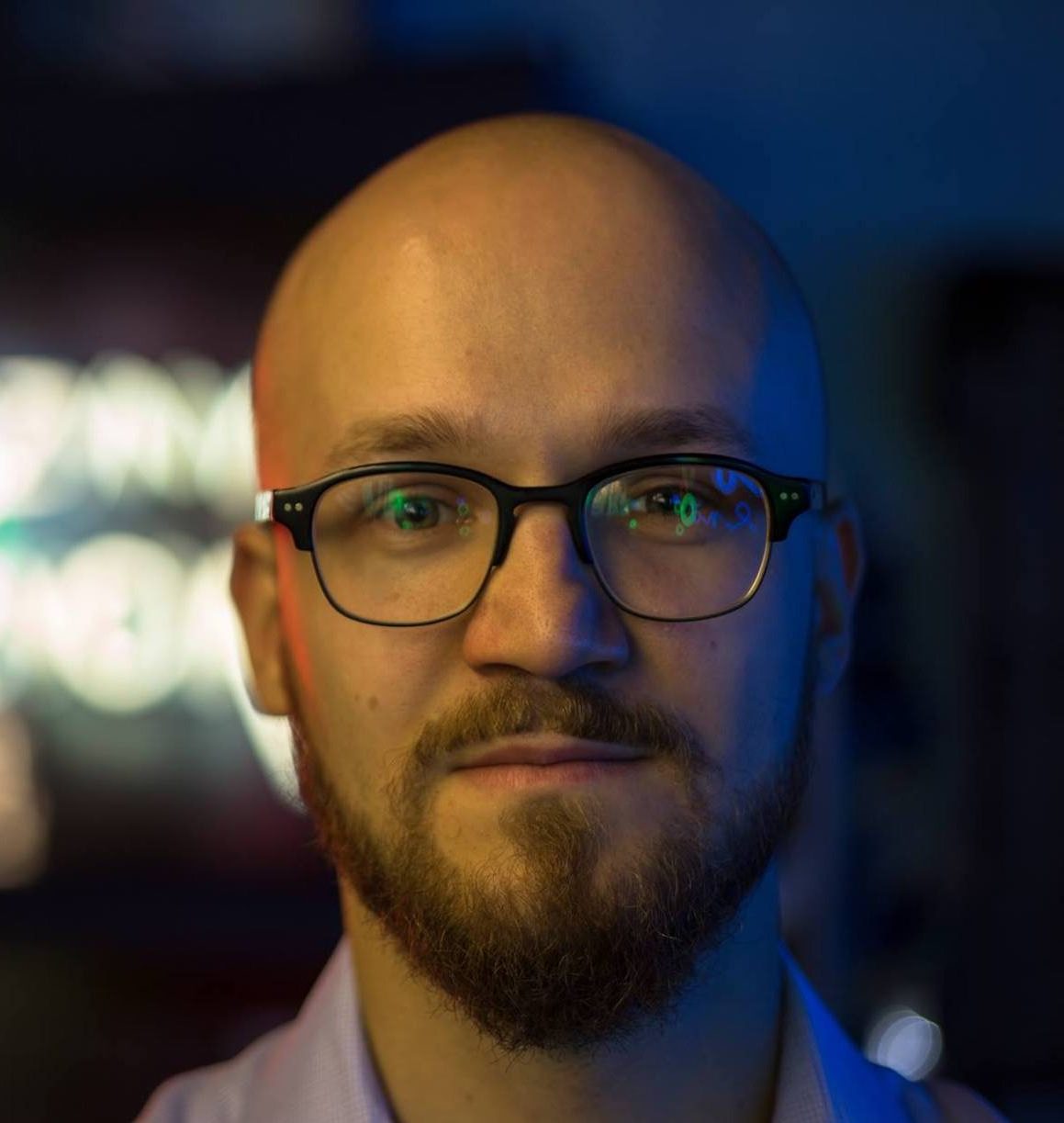

(Many shades of) ML @ Allegro.pl: NLP, Vision & ranking at the largest Polish e-commerce marketplace
by Przemysław Pobrotyn | Research Engineer | Allegro
Show infoBiography:
Pure mathematician by education, machine learning engineer by trade. He graduated University of Oxford with a MMath and never graduated from his PhD programme in non-commutative rings at the University of Edinburgh. Currently leading the team responsible for learning-to-rank algorithms powering the search engine of allegro.pl.
Abstract:
Allegro.pl is the largest Polish e-commerce marketplace, with over 20 million of unique users and selection of over 150 milion offers. With the scale come many challenges best solved by machine learning. In this talk I will give you a whirlwind tour of the lifecycle of products and customers on the platform and how at each step of the journey we use ML to improve the shopping experience. Starting from adding new offers to the platform and matching them with suitable products, through textual and visual search, recommending new products, and finally, to automating customer support, I will zoom in at each step of the customer's journey and explain ML models working tirelessly behind the scenes. Get ready to hear about metric learning for both text and vision, multi-modal ranking, training BERT models on Allegro’s corpora and how real-life problems lead to both production models and research questions and papers coming out of Machine Learning Research group at Allegro.pl
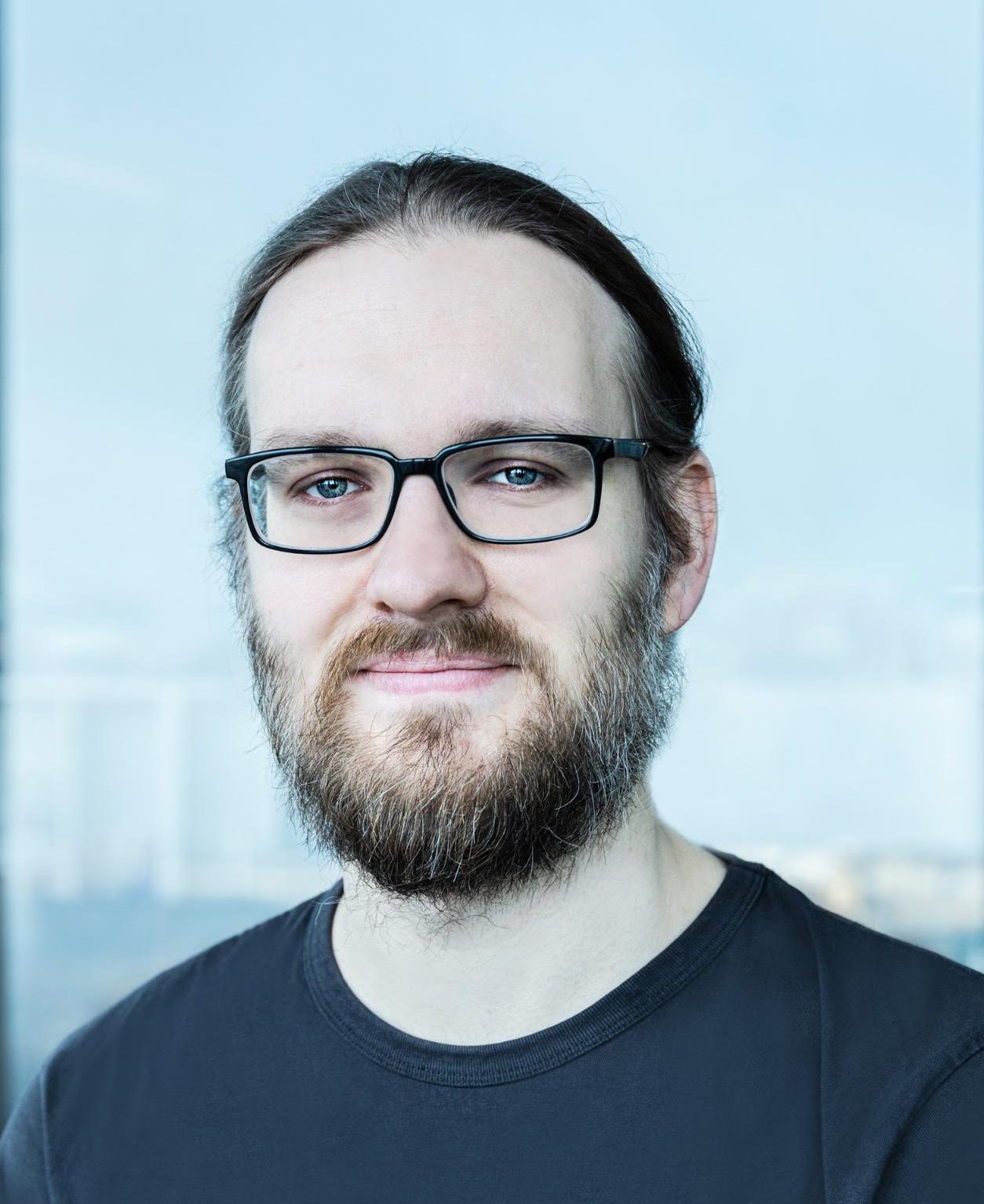

Developing and testing TensorFlow Lite edge AI algorithms without need for hardware using Renode
by Michael Gielda | VP Business Development | Antmicro
Show infoBiography:
Michael Gielda is VP Business Development and co-founder of Antmicro - a software-driven tech company developing modern edge AI systems for various branches of industry including aerospace, medical systems and robotics. Michael is vice-chair of Marketing in RISC-V International and Chair of Marketing and Outreach in CHIPS Alliance. With academic degrees both in computer science and the humanities, he is a firm believer in using open source to advance entire industries through openness and collaboration.
Abstract:
“The future of Machine Learning is Tiny”. Google’s Pete Warden predicted that billions of small, battery operated devices would soon be able to run neural networks and perform complex ML tasks locally, ensuring privacy, security, and instant response. Indeed, TensorFlow, Google’s machine learning framework is now available on fairly resource-constrained devices like Arm Cortex-M microcontrollers or small RISC-V CPUs. However, the issues connected with developing ML algorithms on physical hardware still remain: how do you repeatedly and reliably test various demos, models, and scenarios on a variety of hardware without manually re-plugging, re-flashing, and waving around tiny boards? As a result of our collaboration with Google, Arm, and other partners, Antmicro’s open source simulation framework, Renode, can be used to deal with those challenges. Renode provides the building blocks to build complex virtual systems and enables you to run and measure the performance of real-world machine learning pipelines in simulation, in both interactive and Continuous Integration scenarios. See the talk to learn how to try Renode and TensorFlow Lite yourself without any hardware or installation with Google’s Colab - interactive notebooks in the cloud.
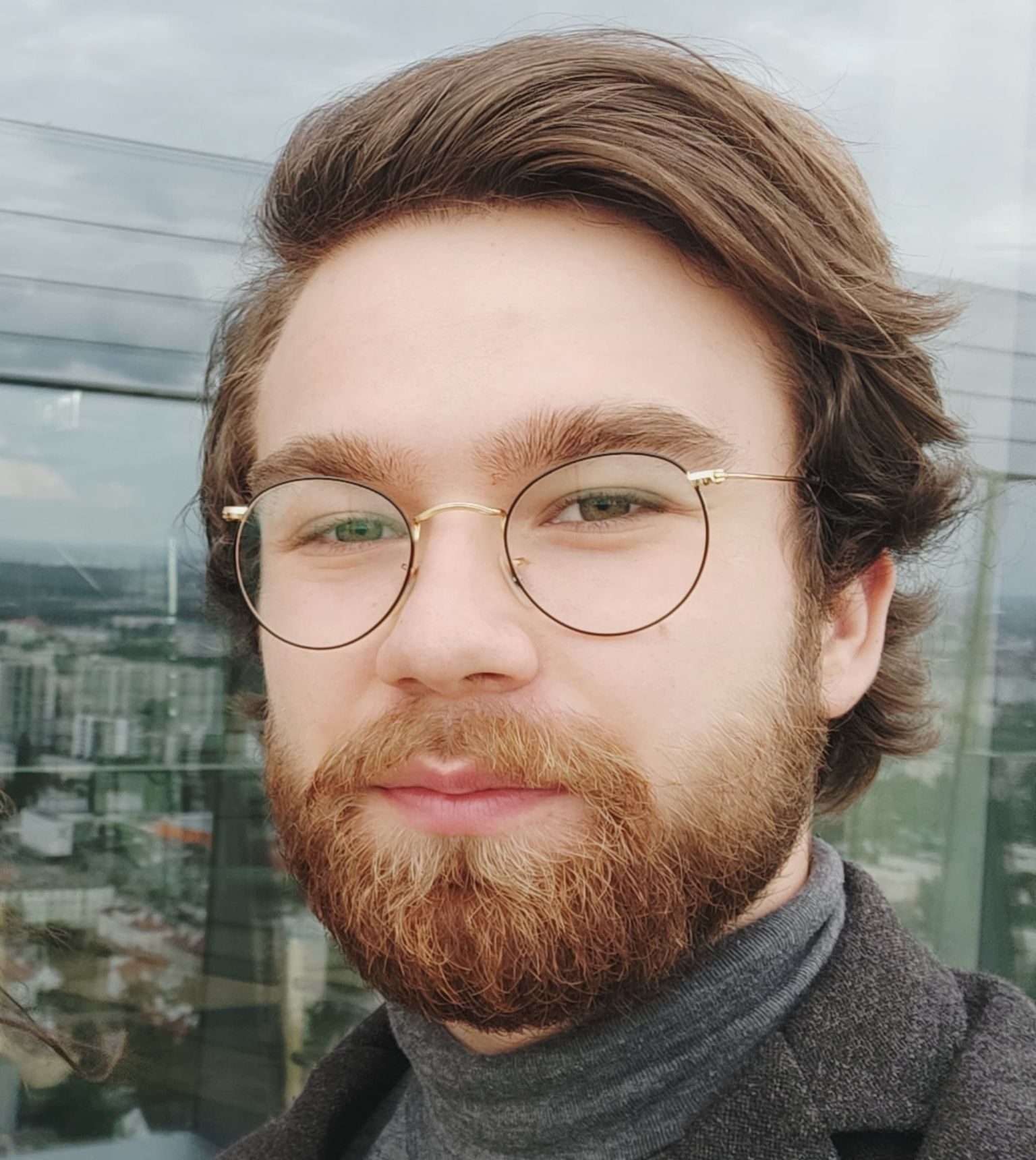

Kidney tumor malignancy prediction: How deep learning can save 8 out of 10 kidneys.
by Aleksander Obuchowski | Lead AI Architect | Radiato.ai/Gdańsk Universtity of Technology
Show infoBiography:
I am lead AI architect at Radiato.ai group - an interdisciplinary team from Gdańsk University of Technology and St. Adalbert Hospital owned by Copernicus Company. I work on natural language processing and image classification algorithms, mainly for healthcare. I study technical physics with applied computer science at Gdańsk University of Technology. Last year, my paper received the Spotlight Presentation distinction at the Association for the Advancement of Artificial Intelligence conference in New York.
Abstract:
Most cases of patients with kidney tumors are represented by elderly people whose operation is associated with a high risk. The decision about whether to perform the operation or not is mainly based on the tumor being malignant or benign. With benign tumors, it is often safer to leave the tumor after observation. However, currently, about 15% to 20% of kidney removal operations (nephrectomies) are performed under the false assumption that the tumor is malignant. This sums up to more than 900 operations yearly in Poland that unnecessarily put the patient's life in danger. This is especially relevant nowadays as research shows that 15% of patients with COVID-19 had experienced kidney disease as a side effect.
We present a system developed by a team from Gdańsk University of Technology and St. Adalbert Hospital that automatically predicts whether the tumor is malignant or benign, based on the CT image of the kidney. This system, trained on more than 15 000w CT images, is able to predict the tumor malignancy with 82% accuracy, while correctly labeling 8 out of 10 benign tumors, in patients that would otherwise undergo operation.


Extreme classification: applications and algorithms
by Marek Wydmuch | Data Scientist/PhD Student | OLX Group/Poznan University of Technology
Show infoBiography:
Marek Wydmuch is a PhD student at the Poznań University of Technology, with his research focused mainly on extreme classification. At the same time, he is also a Data Scientist at OLX Group, where he worked on many commercial projects related to content classification and recommendation. In his free time, Marek is actively engaged in the ML community as a contributor to open-source projects and co-organizer of ML conferences.
Abstract:
Extreme classification is a rapidly growing research area focusing on multi-class and multi-label problems involving an enormous number of labels, often exceeding a million. It has recently been shown that many diverse problems, such as document tagging, image and video annotation for multimedia search, face recognition, ranking and recommendation, can be naturally modeled as extreme classification tasks, often leading to a significant improvement over prior work. In this talk, I'm going to discuss possible applications of extreme classification and present simple yet recently very successful approaches for tackling such extreme problems. All the presented methods were recently implemented in a new Python library: napkinXC, the first library that aims to make extreme classification algorithms fast and easy to apply.


Building NLP toolbox for cybersecurity. Language model for command lines
by Julia Będziechowska | Junior Data Scientist | F-Secure
Show infoBiography:
Julia Będziechowska is an almost-graduate student at the Poznań University of Technology, currently working at F-Secure as Junior Data Scientist. In her free time, she is developing generative models for music.
Abstract:
Command lines are one of the most critical sources of information when preventing cyber-attacks. Due to their variety across different operating systems and executables, their analysis is challenging and hard to automate. Production data supplies millions of command lines samples every day, but what actually can be done without benchmark tasks and labeled datasets?
At F-Secure, we decided to tackle this problem by treating command lines as an artificial language, with its own grammar rules and semantics. At this talk, I would like to tell you how we learned to think big, starting with specialized command line processing tasks and ending up with applications of various NLP algorithms that connect the dots and form up the NLP toolbox.
How do you sample small but representative dataset for manual annotation from an enormous volume of data? Can we define Parts-Of-Speech for command lines? Let’s go through modeling artificial language on its different levels from scratch, starting from character-level embeddings to the syntactic and semantic similarity of command lines.
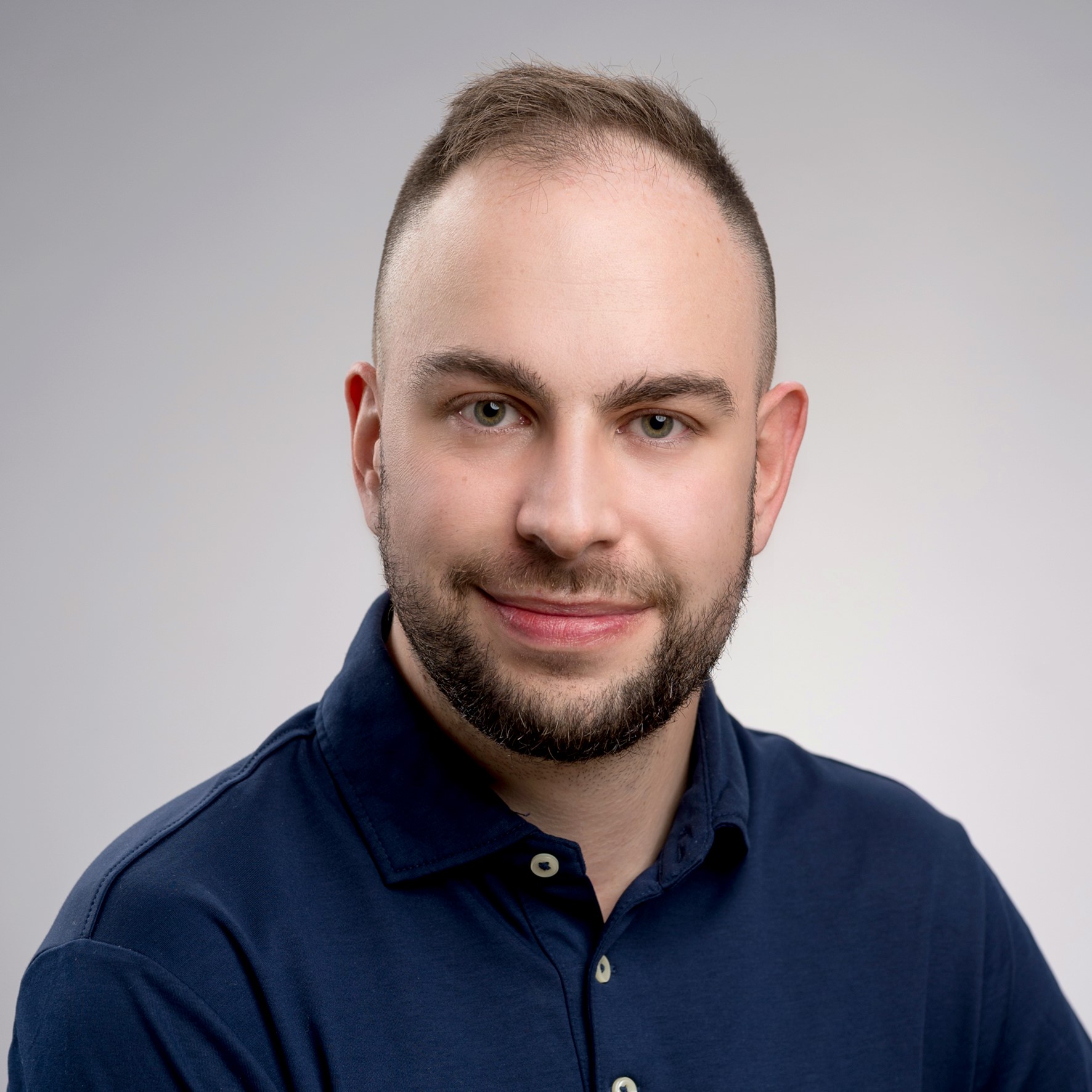

Image Classification in Mixed Martial Arts - Recognition of fighting techniques
by Mateusz Maj | Business Analyst | OLX Group
Show infoBiography:
Business Analyst in OLX Group – Otomoto.pl specializing in e-commerce and automotive market. Sport has inspired him to apply ML outside of work.
Abstract:
Image classification is one of the core problems where a lot of attention has been associated with Machine Learning (ML) and where specifically neural networks winning competitions. Studies result in a large variety of practical applications. However, the application of ML in sports analytics, especially in fighting sports, seems to be limited and left as a domain for further exploration. This talk is concerned with the recognition of different Mixed Martial Arts (MMA) confrontation scenes. As MMA belongs to the most dynamic sport disciplines, where two athletes engage in numerous offensive and defensive actions, it is obvious that understanding the meaning of specific scenes of chaotic and brutal struggles in ‘the cage’ may be a challenging task. Thus, do neural networks achieve such an impressive result in this field? During the talk, I will share experience in the application of ML methods to sport and present the results of the research.
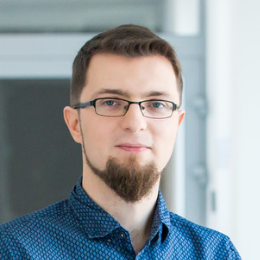

Machine learning in fashion industry - intelligent clothes swapping
by Patryk Miziuła | Senior Data Scientist | deepsense.ai
Show infoBiography:
Patryk Miziuła is a Senior Data Scientist at deepsense.ai. He received his PhD in mathematics from the Institute of Mathematics of the Polish Academy of Sciences in 2015. After a year in academia he decided to turn to industry and become a data scientist. He took part in a dozen projects across machine learning field, including applications in healthcare, criminology, finance, fashion, among others. He is also an experienced machine learning lecturer and workshop runner (Bulgaria, Finland, Italy, Poland, Russia, Romania, UK, USA). Finally, he is into popularization of machine learning in Bydgoszcz, where he lives. He initiated the opening of the Artificial Intelligence specialization of the Computer Science studies at the University of Technology and Life Sciences in Bydgoszcz. He co-founded PyData Bydgoszcz. He mentors students of High School no. 6 in Bydgoszcz.
Abstract:
I'll talk about an interesting use case which we call the clothes swapping. We have two pictures of two different people - the source and the target. The goal is to transfer the clothes from the source person to the target person. We have no metadata, neither model nor cloth references, just the pictures. Clearly, the more the source person differs from the target person, the more challenging the task becomes. Different poses, different body shapes, putting shorter sleeves of the source T-shirt on the longer sleeves already wearing by the target person, guessing where the hips are under a voluminous skirt, etc. - there are a lot of potential obstacles which are easy to notice, but hard to cope with. But we tried. During the presentation I'll show you the pipeline we built and the results we got.
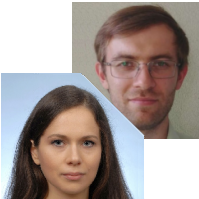

Batch construction strategies in deep metric learning
by Bartosz Ludwiczuk & Kalina Kobus | Research Engineers | Allegro
Show infoBiography:
Bartosz Ludwiczuk and Kalina Jasinska-Kobus are Research Engineers at Allegro.pl. Bartosz's main focus are techniques related to Face-Recognition and Metric-Learning, mainly in the image-domain. He worked on many commercial projects related to OCR, Gait-Recognition or Visual-Search, and participated in Kaggle competitions. He spends his free time mainly on the bike. Kalina Jasinska-Kobus, besides working at Allegro, is also a PhD student at Poznan University of Technology. She was an intern at Microsoft Research Redmond. Her research interests focus on extreme multi-label classification.
Abstract:
In real-world ML applications finding similar items is frequently needed. However, this is not necessarily known how to compare items. Learning a metric that approximates the level of similarity of item pairs, or a function, or an encoder, that embeds the items into a space with some metric, is the goal of metric learning. Frequently the latter approach is more useful as it allows for efficient nearest neighbour search. The task of the learned encoder is to embed similar items closer to each other than to dissimilar ones. The encoder is trained on batches of similar and dissimilar items under a specific loss. As the loss is computed on batches, the effectively optimized criterion depends on what items are included in the batch. We focus on the batch construction strategies and study their impact on the progress of optimization of the task objective. We discuss our findings related to the impact of batch construction strategy on the learning progress and introduce the hard sampler technique, which provides an accuracy boost compared to commonly used sampling techniques.
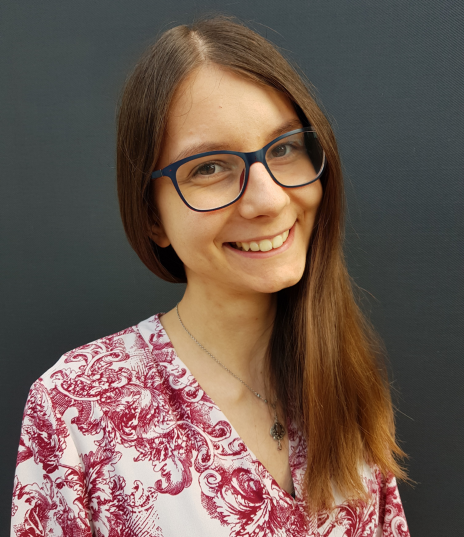


Explaining the unexplainable - can we depend on what we don’t understand?
by Zuzanna Trafas | Member | GHOST
Show infoBiography:
Zuzanna Trafas is undergraduate student at the Poznań University of Technology, member of Group of Horribly Optimistic STatisticians (GHOST), and an enthusiast of diving. Intern at Open Analytics - Antwerpian Data Science company.
Abstract:
Nowadays, every human’s life is getting more and more dependent on artificial intelligence. Computers are already making crucial choices - they decide who should be sent to prison, who should be given a loan, and what medications should be prescribed to a patient. Customers, especially those unsatisfied, often want to know why particular decisions are made. And here we encounter a problem - having a highly nonlinear, complex model, how can we possibly explain what it does? Our customer won’t be satisfied with the explanation that the model has 99% accuracy and rarely makes mistakes. But does it mean that we are limited to the use of simple, white box models, that we can easily interpret? Is the tradeoff between accuracy and interpretability still relevant? Are we able to explain the decisions of complex neural networks to nontechnical users? That’s where modern explainable AI methods like LIME and SHAP come into play.
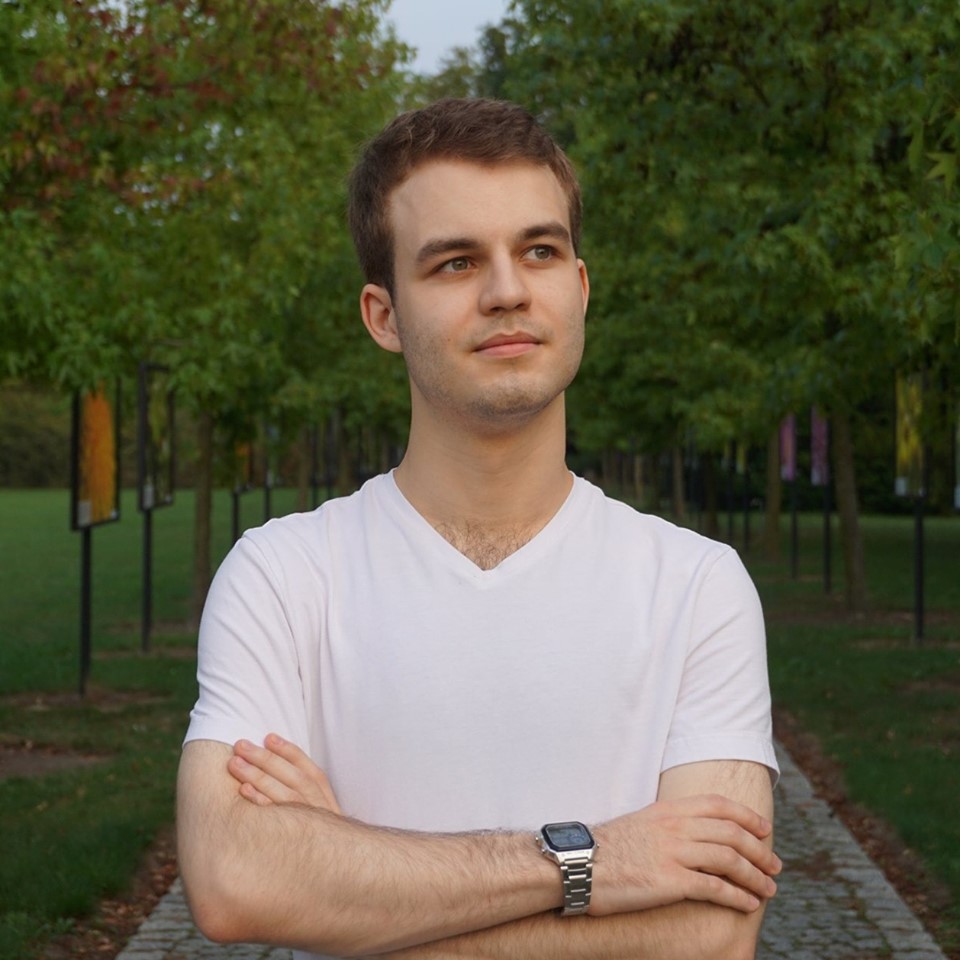
Biography:
Dariusz Max Adamski is an undergraduate student at the Poznań University of Technology and a member of the GHOST student group. Currently working as a Data Scientist at Ecoterm Complex.
Abstract:
Which decisions should you make to change a predicted outcome? How would the outcome change if you had more data? How confident is your model about its predictions? Building probabilistic models is one way of finding answers to those questions.
The Bayesian approach to inference allows models to quantify uncertainties, test hypotheses, express expert assumptions about the world, and continuously learn from new observations. On the other hand, a probabilistic programming framework makes writing these models simple and automatically performs inference.
In this talk, I will briefly introduce Bayesian inference and probabilistic programming with real-world examples. Then I will present a probabilistic model I'm developing, which attempts to capture dependencies between energy usage in commercial buildings and various factors, like user behavior, faulty appliances, and weather. The model is used to predict future power consumption and suggest actions, which are most likely to lower it. Amongst the benefits of this approach are high interpretability of the recommended actions and the opportunity for knowledge extraction.
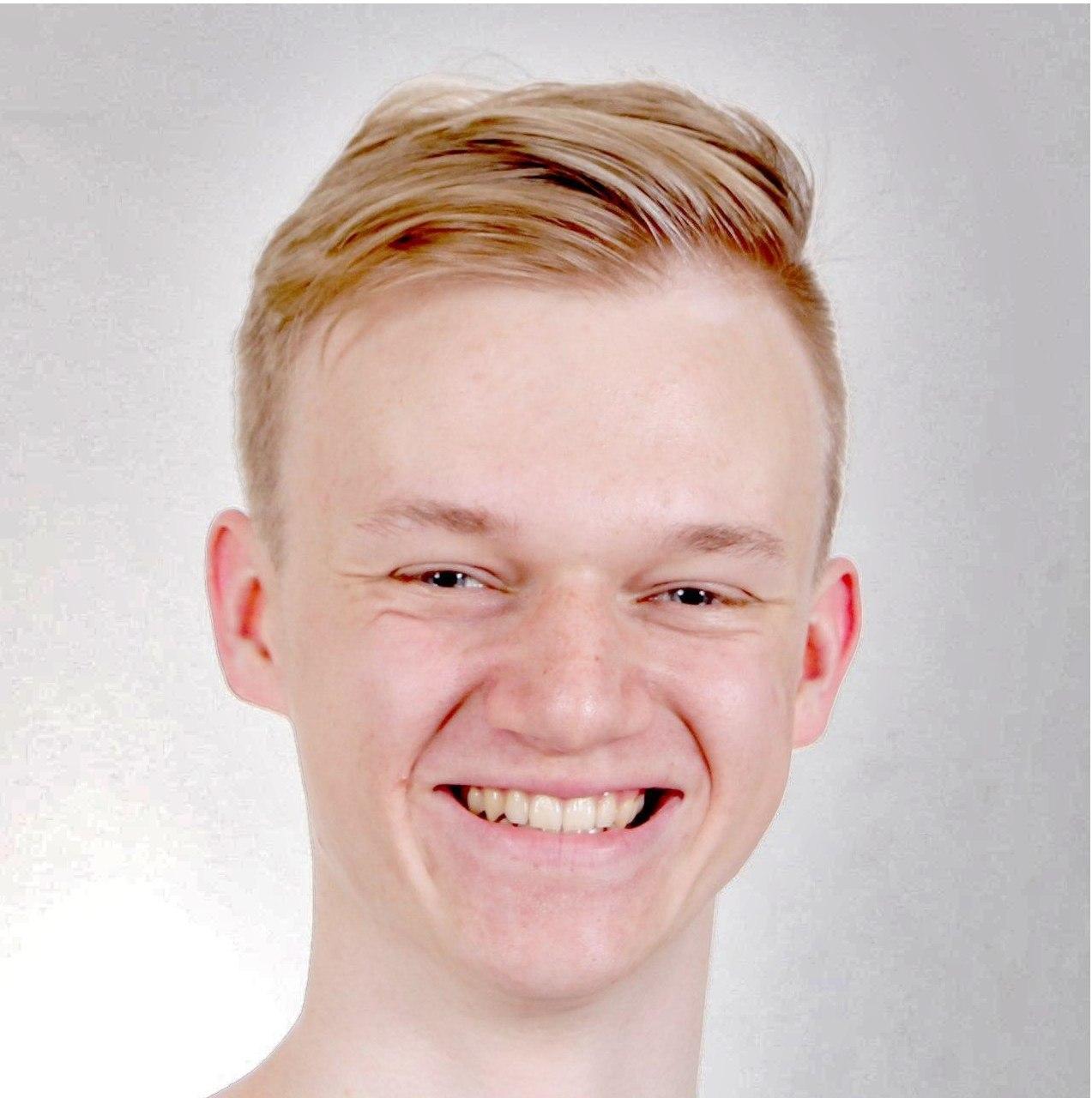
Biography:
Piotr Wyrwiński is a graduate student at the Poznań University of Technology and a member of the "Group of Horribly Optimistic STatisticians" (GHOST). Currently, he works as a Machine Learning Researcher in Poznan Supercomputing and Networking Center.
Abstract:
Most machine learning methods proposed in the literature for malware classification are not based on understanding the semantics of assembly code when using an only literal representation of code. As a consequence, various neural network approaches using literal similarity are not able to surpass the classical XGBoost analysis based on n-grams distribution. In this presentation, I will tell you how our team exceeded the Microsoft Malware Classification Challenge 2015 benchmark by using an ensemble method to exploit both classical and neural network solutions. We apply a structural approach to malware classification using more complex neural networks, including networks with attention. Specifically, we improve the way of using printable string features and address representation. This delivers better representation compared to a pure string treatment. Besides higher accuracy, our approach brings better interpretability to performance measures for malware classification.